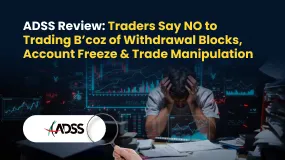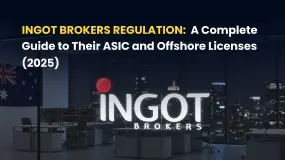简体中文
繁體中文
English
Pусский
日本語
ภาษาไทย
Tiếng Việt
Bahasa Indonesia
Español
हिन्दी
Filippiiniläinen
Français
Deutsch
Português
Türkçe
한국어
العربية
Short Selling: What Experts Should Note Pt. 1
Abstract:The first thing to consider before learning this approach, short selling is an advanced strategy for trading and investing experts. Short selling is a method for traders to speculate.

Meanwhile, for portfolio managers or investors they use hedge to battle the downside risk in the long position. But why do traders need short selling to speculate? Speculating means you will meet the possibility of substantial risk and in the trading. In other words, hedging is a common transaction that involves placing an offsetting position to limit risk.
The position in short selling begins by borrowing shares of assets or stock investors believe will decrease in value. Next, the investor sells these borrowed stocks or assets to buyers. In this situation, traders could start bidding the lower cost because they bet that the price would continue to jump. Because trading profit is infinite, the loss in short selling is also infinite. But from where do the sellers open the position? Usually they open short selling from a broker-dealer. They hope that they could somehow buy back if the price declines.
The form should be borrowed shares because it simply cannot sell shares that do not exist.In order to close a short position, a trader could buy the shares back on the market. Traders should be aware about the account and interest charged by the brokers. Furthermore, in order to start short selling, a trader should own a margin account. Margin account is basically a brokerage account the broker lends the customer to pay stocks or other products in finance.
When the position opens, a trader sometimes must pay for charges too. It is important to know that some financial institutions set minimum values for the margin account they maintain known as the maintenance margin. These financial institutions are FINRA (Financial Industry Regulatory Authority Inc, NYSE (The New York Stock Exchange), and the Federal Reserve.

Disclaimer:
The views in this article only represent the author's personal views, and do not constitute investment advice on this platform. This platform does not guarantee the accuracy, completeness and timeliness of the information in the article, and will not be liable for any loss caused by the use of or reliance on the information in the article.
Read more

Grand Capital Doesn’t Feel GRAND for Traders with Withdrawal Denials & Long Processing Times
The trading environment does not seem that rosy for traders at Grand Capital, a Seychelles-based forex broker. Traders’ requests for withdrawals are alleged to be in the review process for months, making them frustrated and helpless. Despite meeting the guidelines, traders find it hard to withdraw funds, as suggested by their complaints online. What’s also troubling traders are long processing times concerning Grand Capital withdrawals. In this Grand Capital review segment, we have shared some complaints for you to look at. Read on!

EmiraX Markets Withdrawal Issues Exposed
EmiraX Markets Review reveals unregulated status, fake license claims, and withdrawal issues. Stay safe and avoid this broker.

ADSS Review: Traders Say NO to Trading B’coz of Withdrawal Blocks, Account Freeze & Trade Issues
Does ADSS give you plenty of excuses to deny you access to withdrawals? Is your withdrawal request pending for months or years? Do you witness account freezes from the United Arab Emirates-based forex broker? Do you struggle to open and close your forex positions on the ADSS app? Does the customer support service fail to respond to your trading queries? All these issues have become a rage online. In this ADSS Broker review article, we have highlighted actual trader wordings on these issues. Keep reading!

INGOT Brokers Regulation 2025: ASIC vs Offshore License - What Traders Must Know
Explore INGOT Brokers regulation in 2025: Compare their ASIC and Seychelles FSA licenses, understand trader protection levels, and learn about potential risks in this detailed guide.
WikiFX Broker
Latest News
Mitrade Arabic Platform Targets MENA Gold Trading Boom
Israeli Arrested in Rome Over €50M Forex Scam
New FCA Consumer Alert 2025: Important Warning for All Consumers
EmiraX Markets Withdrawal Issues Exposed
2 Malaysians Arrested in $1 Million Gold Scam Impersonating Singapore Officials
Exness Broker Expands in South Africa with Cape Town Hub
Fraud Mastermind Zhimin Qian Sentenced to 11 Years for $6.6 Billion Bitcoin Ponzi Scheme
Is FXPesa Regulated? Real User Reviews & Regulation Check
Almahfaza Broker – 2025 Review: Safe or Scam?
Uniglobe Markets Review 2025: A Complete Guide to an Unregulated Broker
Currency Calculator



